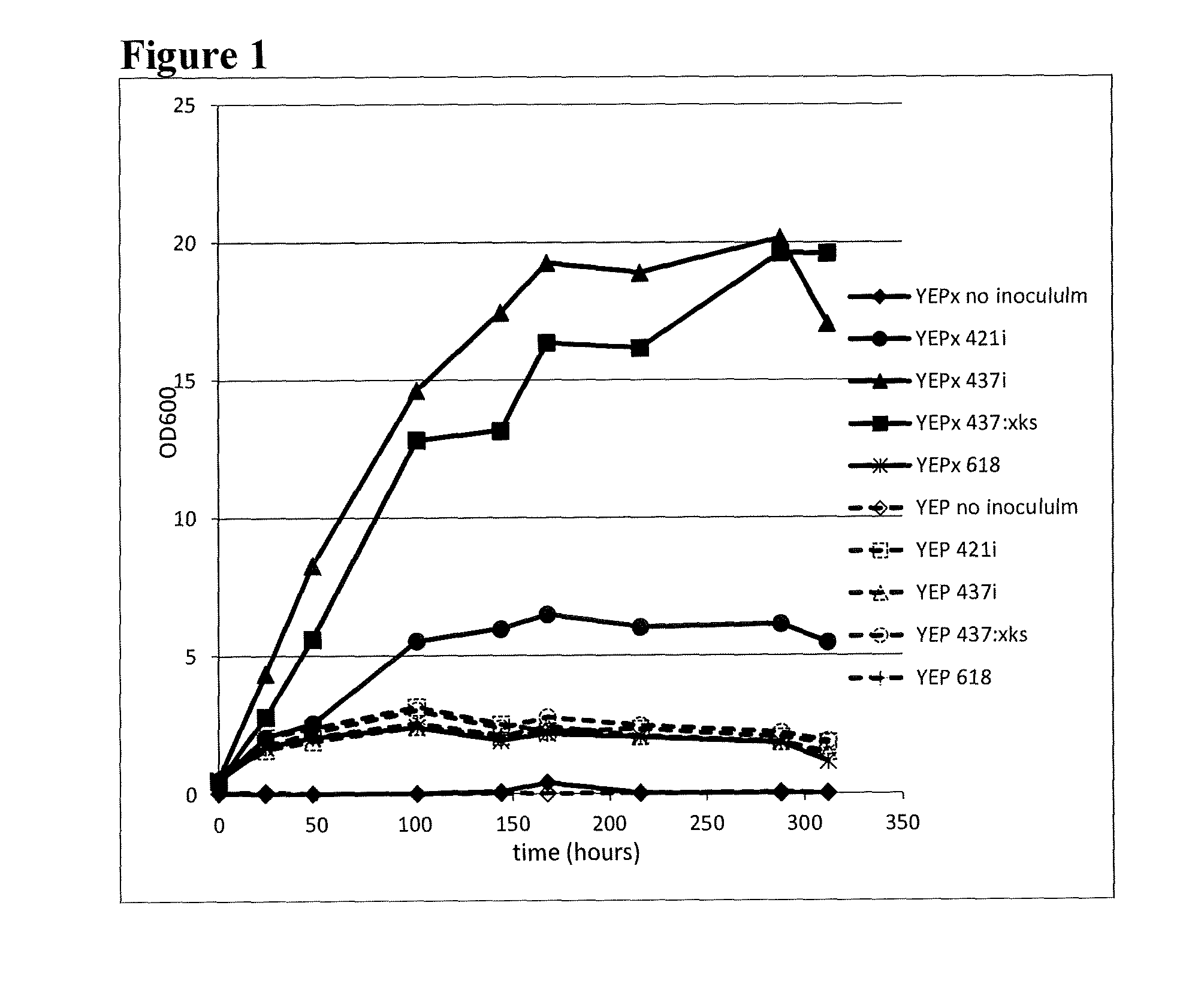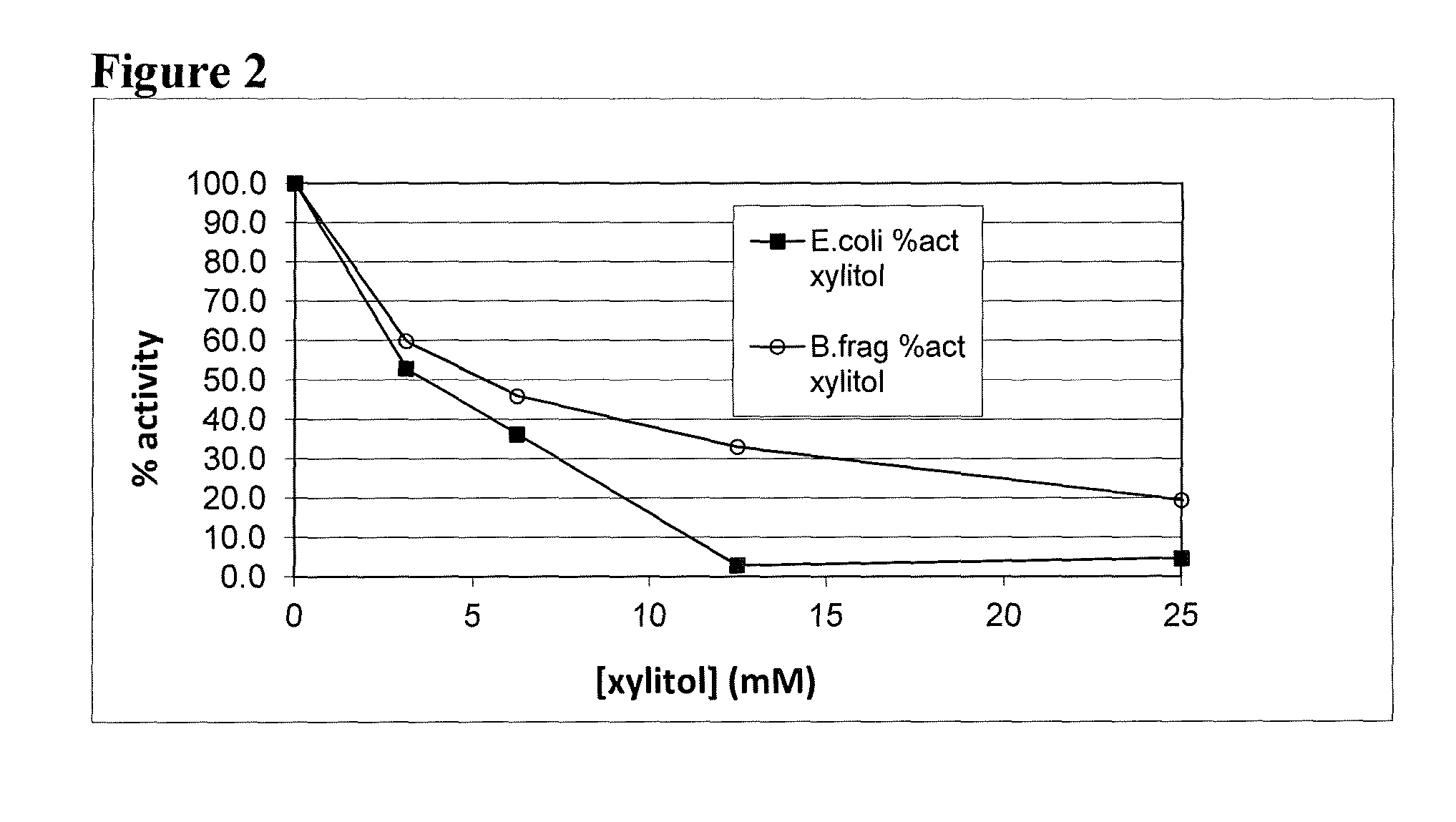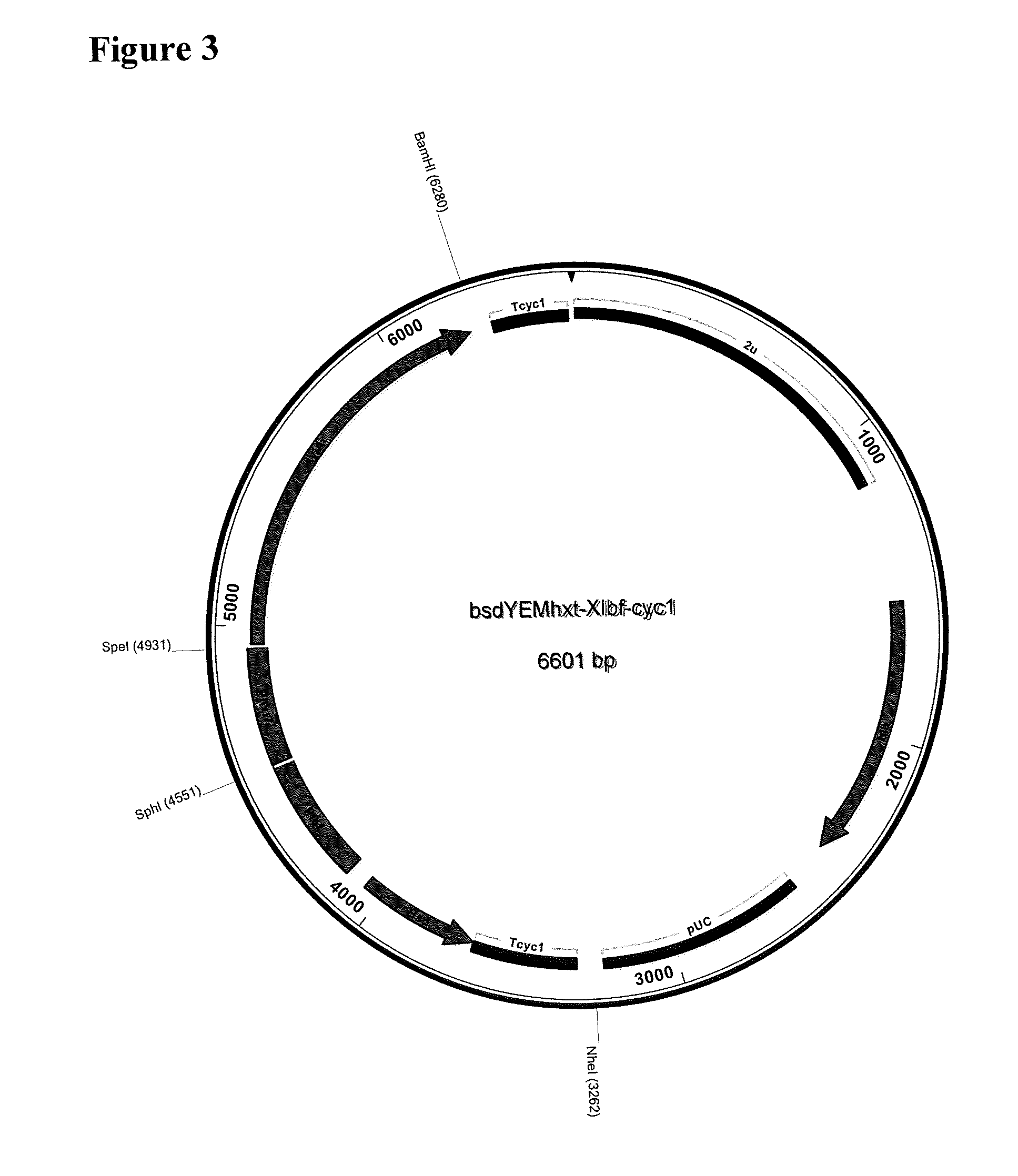Xylose isomerase and xylitol dehydrogenase combination for xylose fermentation to ethanol and B. fragilis xylose isomerase
a technology of xylose and isomerase, which is applied in the field of xylose isomerase and xylitol dehydrogenase combination, can solve the problems of low expression of xylulokinase in i>s. cerevisiae /i>s. cerevisiae, and the inability to utilize xylose as a carbon source without metabolic engineering, and achieves less inhibition
- Summary
- Abstract
- Description
- Claims
- Application Information
AI Technical Summary
Benefits of technology
Problems solved by technology
Method used
Image
Examples
Embodiment Construction
[0022]The following description and forgoing Background make citations to certain references that may aid one of ordinary skill in the art understand the present invention and that may provide materials, information, techniques, proteins, vectors and nucleotide sequences that may assist one of ordinary skill in the art to make and use aspects of the present invention in its fullest scope. Accordingly, each cited reference is incorporated into this application as if originally filed herewith to the extent the teaching of the cited references do not conflict with the teaching of the present application, in which case the teaching of this application shall be deemed to control over the conflicting teaching of art incorporated herein by reference.
[0023]One aspect of the invention is discovery that the xylose isomerase from Bacteroides fragilis is less sensitive to xylitol inhibition than are other xylose isomerase. Examples of other xylose isomerases include, but are not limited, those ...
PUM
| Property | Measurement | Unit |
|---|---|---|
| volume | aaaaa | aaaaa |
| resistance | aaaaa | aaaaa |
| concentrations | aaaaa | aaaaa |
Abstract
Description
Claims
Application Information
 Login to View More
Login to View More - R&D
- Intellectual Property
- Life Sciences
- Materials
- Tech Scout
- Unparalleled Data Quality
- Higher Quality Content
- 60% Fewer Hallucinations
Browse by: Latest US Patents, China's latest patents, Technical Efficacy Thesaurus, Application Domain, Technology Topic, Popular Technical Reports.
© 2025 PatSnap. All rights reserved.Legal|Privacy policy|Modern Slavery Act Transparency Statement|Sitemap|About US| Contact US: help@patsnap.com



